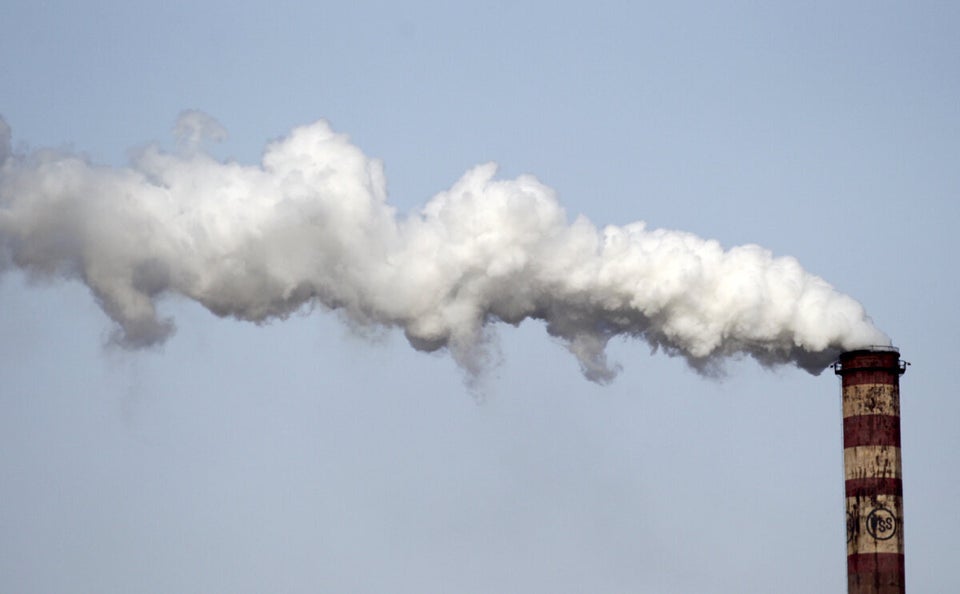
The verdict is in: The year 2012 was a historic one for extreme weather, as a mixed bag of drought, wildfires, hurricanes and storms swept across the U.S.A., according to the latest reports by the National Oceanic and Atmospheric Administration (NOAA).
Meantime this past weekend temperatures in Toronto were in the mid-teens; seems like Déjà vu all over again, as last winter, record breaking temperatures were set in many provinces. So I think it would be safe to say that deep down North Americans are feeling a bit unsettled by the whacky weather patterns.
According to a recent survey conducted in Canada for IPAC-CO2 Research Inc., a Regina-based research centre for carbon capture and storage, 98 per cent of Canadians believe climate change is happening, with almost 32 per cent placing the entire blame on human activities, and 54 per cent blaming human activities combined with a small degree of natural climate variation.
Americans also seem to be extremely concerned. A recent report titled "Climate Change in the American Mind" says more Americans now believe global warming is real -- the believers went from 57 per cent in June 2010 to 70 per cent in September 2012. Also, for the first time since 2008, more than half of Americans (54%) believe global warming is caused mostly by human activities.
Ironically, though, despite such dramatic shifts in the public perception of climate change, people's daily actions and habits don't seem to reflect their concerns. How can we explain this dissonance and disconnect?
In a recent interview with Bill Moyers, Dr. Anthony Leiserowitz, Director of the Yale Project on Climate Change Communication at Yale University, said:
"As human beings we are exquisitely attuned to what's happening in our immediate environment and what we can see around us and what literally touches us physically."
However climate change is distant in time, space and geographic location, and the impact is felt only in the long term, so people in North America generally dismiss climate change as a problem for small island nations or third world countries.
Another key reason for the deep disconnect is inadequate climate change coverage by the media, which plays an important agenda setting role, according to Dr. Leiserowitz. He argues:
"We've seen that this issue gets just a tiny proportion of the news haul. Of all the stories that the media focuses on every year climate change is miniscule. And in fact, even the environment as a category never gets above say one or at most two percent of total news coverage."
Unfortunately, the problem is compounded, as climate change cannot be seen or experienced immediately, and therefore real life visuals are unavailable for television coverage.
Few would argue with the fact that sights, sounds and images on television newscasts resonate more deeply in the minds of people compared to newspapers articles, giving the television news media better advantage and power in portraying climate change as a crisis of apocalyptic magnitude. Dire warnings such as 'Astonishing' Ice Melt May Lead to More Extreme Winters'; 'The Summer of Wild Weather'; 'Global Warming's Terrifying New Math'; 'Extreme weather on steroids" dominated the news headlines, and reignited climate change discussions in 2012.
But the question is do these dire warnings work? Furthermore, how do these dire warnings impact people's psyche?
Even if well intentioned, and genuinely aimed at bolstering public engagement, psychoanalysts argue, such dire warnings are counterproductive and in fact push people away from the issue even further. In a published report entitled "Fear won't do it" Saffron O'Neill and Sophie Nicholson-Cole present the psychological effects of iconic images, and dramatic sounds and narratives used by the media in portraying climate change. They find that although at first people gravitate to sensationalism, in the long run they become paralyzed by fear, and feel dis-empowered to take any action.
The researchers explain that fear mongering can lead to one of two psychological responses in people -- either try to control the apparent external danger, or try to control the internal fear. If the external danger, which in this instance is the manifestation of climate change, is out of their control, then people will look for ways to manage the internal fear. They do this by immersing themselves in other things and pretending everything is okay, eventually avoiding the issue completely.
Another published study titled "Apocalypse Soon?" by Matthew Feinberg and Robb Willer of the psychology department at the University of California, sheds light on the impact of dire messages. Two groups of people were involved -- the first group of undergraduate students was asked to read a fact-based scientific article on climate change with the last two pages describing the dire consequences. In the second study, the American public was asked to view two dire videos that depicted bad things happening to children, and the imminent catastrophe awaiting future generations.
The results shed light on how people's core values and world views are threatened by dire messages. The researchers say:
"People want to believe that they live in a just world where righteous people are rewarded and punishment is meted out to those that are selfish, unjust and unethical. Any messages challenging those views make people defensive and prompt them to reject climate change."
So the question is what emotions may help spur public engagement and action on this very crucial issue?
Dr. Leiserowitz prescribes worry-based messages. He suggests people are more receptive to "worry-based" messages because they worry about so many things in their day to day life -- they worry about the economy, their jobs, family etc. Worry, he adds, gives a sense of hope that something can be done, whereas fear evokes the fight or flight reaction. Even though climate change risks may be perceived as threatening, he says, if people feel hopeful they'd become interested in mitigating the threat.
